The ‘Not Normal’ Way To Shoot A Film
Director Matt MacDonald talks us through how Grand Theft Auto 5 was the perfect location for his crime thriller.
Unless you're a lottery winner looking to blow some serious cash, someone with some serious ‘town hall’ sway or a director with the last name ‘Bay’ or ‘Mann’ or ‘Scott’, it’s unlikely that you’ll have the opportunity to shoot a short film in multiple locations, close off busy streets and hire a cast of thousands. That is, unless you are skilled in the art of Machinima…
For his film ’Not Normal’, filmmaker Matt MacDonald eschewed the normal trappings of low-budget short-form (limited shoot spots, complex permits, expensive casting) by tapping into the fully realised locations and avatars of hit game Grand Theft Auto 5. Known for it’s strikingly realistic models and thriving modding community, the game’s engine and breadth of adaptability meant that, with a LOT of time and patience, MacDonald was able to craft a flick that most studios would dismiss on budget alone.
We loved the film and were blown away by what we saw in the in-depth ‘making of’, so caught up with Matt to talk digital puppetry, overcoming the limitations and what to do when you have a city at your disposal.
As a filmmaker, what attracted you to work with Machinima?
“Oh, you want to make movies? Well, nothing’s stopping you! Just make it!” That’s the conventional wisdom you so often hear from people. And to an extent, that’s true. You can pop on your cell phone camera, record your pals goofing off, and you might actually end up with something watchable (maybe…). But, the reality is, we’re always going to be battling budgets and any script you write is going to be severely limited by what you actually have the means to pull off at a professional level of quality. As a director, I’m really intrigued by intelligent, large-scale films and, unfortunately, they tend to be very expensive. Bummer, right?
Video games are interesting because they’ve become so life-like they can almost pass for live action. I thought it might be a fun experiment to make a machinima that was super slick and ambitious for zero money and hopefully convince someone I have the chops to do it for real one day.
Did the concept for ‘Not Normal’ come directly from GTA 5, or was it an idea you already had and the story fitted the tech?
Like so many others, the past 9 months or so for me have been a bizarre mix of disbelief, disgust, and disheartening rage. The world of GTA5 is already over-the-top and comical, but so often it feels like our real world is matching that and then some. I knew I wanted to make some kind of artistic commentary on the current state of affairs in the U.S. (and elsewhere) and when exploring the idea of making a machinima, the story for “Not Normal” seemed to naturally grow out of this video game world where people ignore facts and blindly follow ideologies, no matter how dangerous or contradictory they may be.
How did the ‘pre-production’ for the film come together? Was it similar to conventional filmmaking in any way?
I purposely approached pre-production the same way I would a conventional shoot (mainly because that’s all I know how to do). I spent a lot of time location scouting. I wrote the script around animations and actions and props I knew were already in the game. I watched several films for inspiration and stole a couple shot ideas from a “Top 10 Movie Car Chases” video on YouTube. Looking back, it wasn’t much different than what you’d do on any other low-budget film – you write around your limitations and what you have access to and then just execute as best you can.
We're interested in talking about the limitations / possibilities presented when using an engine and setup such as GTA 5. Was it liberating to be able to ‘shoot’ anywhere regardless of physics and budget, or did having freedom in that capacity actually create more limitations.
It’s a very strange process using an engine. In one sense, as you said, it is incredibly liberating. You can move your camera virtually anywhere. You can get endless coverage for the same take without having to re-shoot. You can tinker and tweak timing to your heart’s content until the shot is exactly what you want because the only thing you’re spending is your own time. On the other hand, you’re using a video game for something it was never intended, so there’s inherent limitations. For example, there are no actors in front of a camera. You can’t really do dialogue scenes because the lip synch will never match and your “actors” are just 3D models staring blankly into the uncanny valley. Unless you’re Avatar and can bust out facial mo-cap, close-ups are dangerous because human emotion will never convey properly.
Scenes you would maybe shoot one way in live action have to be rethought because the textures fall apart if you get too close or the game doesn't have a proper animation for the scenario you're thinking up. It's quite challenging. Because my goal for this film was to emulate a real-life shoot, I made a conscious decision to film scenes in a way that could be replicated with real cameras in real locations. So, that meant avoiding any moves that were too wild or precise or defied physics in some way. I think self-imposed restrictions help handle the potentially overwhelming options and also add to the realism because it LOOKS like an actual movie.
How did you go about actually ‘shooting’ the film? Did you feel like a director? A gamer? A puppeteer?
I was surprised to discover the facets I enjoyed most making a film this way were the same you'd encounter on a traditional set. I really enjoyed blocking out the scenes -- looking around the locations I had selected and plotting out the action my characters would perform. I really enjoyed lighting the scenes just like a cinematographer, finding ways to make these iconic GTA settings look unique and more cinematic. I enjoyed placing the camerawork, emulating big crane moves and moving picture cars. You feel very much like a director and – gonna go out on a limb here – it’s probably not all that different from captaining that big blockbuster you’d see at the theatre.
The aspects I found the most frustrating were the nitty gritty tedious tasks – looking through thousands of animations to find the right one for the scene. Troubleshooting technical glitches and crashes when the game decides to bug out. In those moments, you feel much more like a keyboard monkey or suicidal I.T. worker.
As detailed in your ‘making of’, you couldn’t really give the characters dialogue as the avatar’s performance wouldn’t match it. Did you have a vocal soundtrack in place when you constructed the film, or was that recorded after a structural edit?
Typically, when I edit a project with voiceover, I’ll record a scratch track just for timing purposes. That way, I know roughly how long it will take for each line and I can edit footage accordingly. Even though my voice sounds ridiculous as the Narrator, having a placeholder is helpful for structural purposes (as you mentioned) and anyone I show an early cut to will still get a general idea of the vibe I’m going for. Once I got the final recording from the actor Jon Bailey, it was simply a matter of dropping his audio in and making minor adjustments.
Was the post-production process similar to a conventional film? Is there much manipulation you can do to the footage after capture?
Once I got the footage out of the game, post-production was no different than any other project. I organized my camera setups just like a live action shoot – Scene 4B, 4C, etc. – and put together the edit one scene at a time. As you saw in the making-of video, I did a fair amount of visual effects work as well, but again, it was exactly the same process you’d do with traditional footage. The only difference with this movie was if, in the course of editing, I discovered a particular shot just wasn’t working and I wasn’t happy with any of the takes, I had the ability to hop back in the game and re-shoot it fairly painlessly.
For example, the crime scene sequence during the early part of the film. I must have re-shot it 4 or 5 times. I kept placing it in the edit and seeing details I had missed or being frustrated with the timing or thinking up new ideas and techniques to make the scene cooler. That’s the real advantage with machinima – you can keep working at it until you’re fully happy (or until you’re sick of it). Either way, it’s on your own terms.
What were the biggest challenges whilst making the film?
As I mentioned, not having actual actors was incredibly challenging. Simple things you would think nothing of on a live action set suddenly are huge challenges. In “Not Normal,” there’s a pivotal scene when our anti-hero Narrator stops at a traffic light and pulls a gun on the guy in the car next to him. On a normal set, this is nothing. Look over, aim the gun, guy gets scared, call it a day. Not so on a machinima.
First of all, you need to record the Narrator looking over, but that shot only really works from one angle. If you place the camera too much to one side or the other, the model’s face looks incredibly strange, with the corner of his mouth sticking out for some reason like some kind of horrifying stroke. If you place the camera too close, the skin texture falls apart and his face looks like a really low-resolution JPEG your older family members might send in an email.
Okay, we’ve got that part recorded – now time to aim the gun. We use the firing animation from the game to point the gun, but this too only works from one angle because his arm is sticking out halfway through the windshield. Also, we can only use part of the animation in the edit because his hand suddenly jumps a foot for no reason, making the action super jerky, or the gun glides through the car door as if it wasn’t even there. If we want a reaction shot of the guy looking scared, we have to spend an hour going through every animation in the game to find something that works. Great, we’ve got him holding up his hands in fear. Now, we have to do it all over again and find a facial animation so he looks somewhat shocked or nervous.
Piece by piece you put this together, spending hours for something that would literally take 30 seconds to do in real life. Then, if you’re really unlucky, you might put all this work in only to discover that once the footage is in the replay mode where we place cameras, one of the lights you spawned in to light the scene glitches out for no reason, ruining everything, and you have to redo the entire sequence over.
You can imagine how frustrating the process can become. I recommend alcohol.
The film has received some hearty praise since release – were you expecting such an overwhelming response?
I feel very fortunate the film has received such an overwhelmingly positive reaction and I can only hope it continues to be seen by both film and video game fans. When it comes to the Internet, it’s dangerous to expect any kind of specific response and I suspect a large part of the film’s success so far has been because of the controversy surrounding GTA game mods. Still, I hope the message of the film resonates and can inspire further conversation about the absurdity many communities are loudly promoting. Plus, maybe it will inspire other filmmakers to consider outside-the-box means when telling their stories while we all try to “break in.”
As mentioned before, you coupled the film with a detailed ‘making of’. What was the inking behind that – did you want to inspire the community, share some tips or just show how bloody hard it is?!
It was totally the last one. Actually, during the course of making the film, I was often perplexed to try and describe the idea to people. “So… uh… you’re making a video game?” they’d ask, as I just shook my head, quickly changing the topic to avoid further confusion. A behind-the-scenes video became an easy shorthand to not only explain the process to someone wholly unfamiliar with the concept, but also offer tips and tricks to other people looking to do the same thing (something I was certainly appreciative of when just starting out). Furthermore, it gave me license to make something fun and silly after the SUPER MEGA SERIOUS tone of the film. That’s a double win in my book.
Would you say that Machinima a good form for all filmmakers to work in, or is it just for those with a technical mindset?
While there are undeniable tech hurdles, I think machinima is a great tool all filmmakers should consider. Even if you aren’t necessarily interested in making a film, it can be an enormously helpful tool for pre-visualization. I can definitely see myself returning to it in the future to work out ideas for an action scene or create a slick animatic to show a crew. Why pay an expensive post house for something you can make just as good, if not better, yourself for no cost? It’s the budget-friendly thing to do and your producer will thank you.
What’s up next for you?
Next up for me is trying to graduate from short films and move on up to the world of features. I’ve got a couple scripts I’ve been hammering out for awhile, so it’s time to find the right team and take the plunge. And this time, with REAL actors. My computer is tired of rendering.

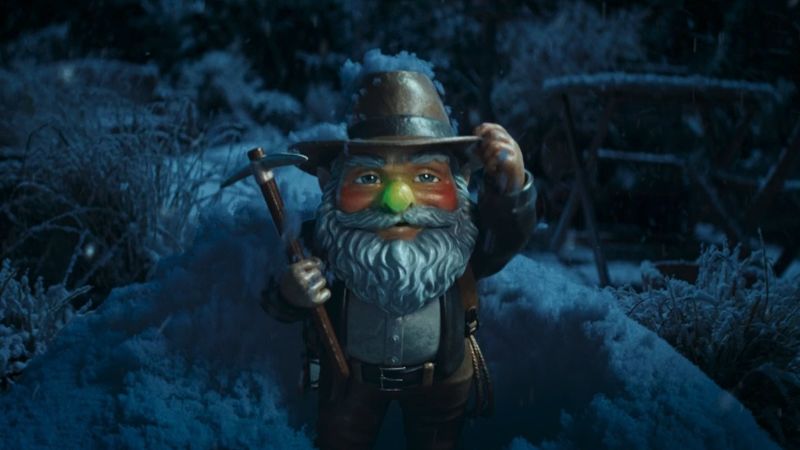







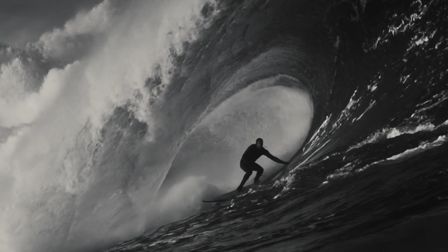
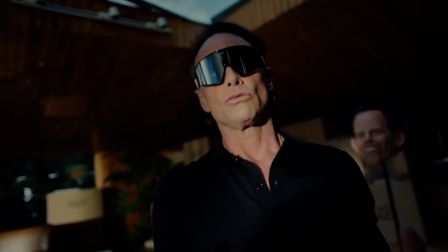
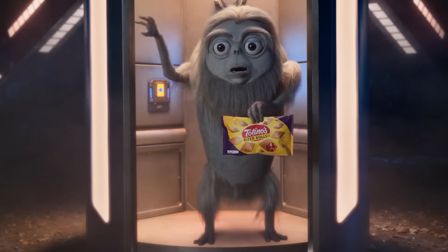
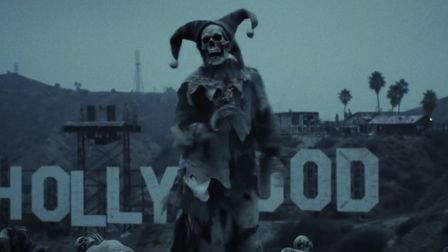
 Membership
Membership



